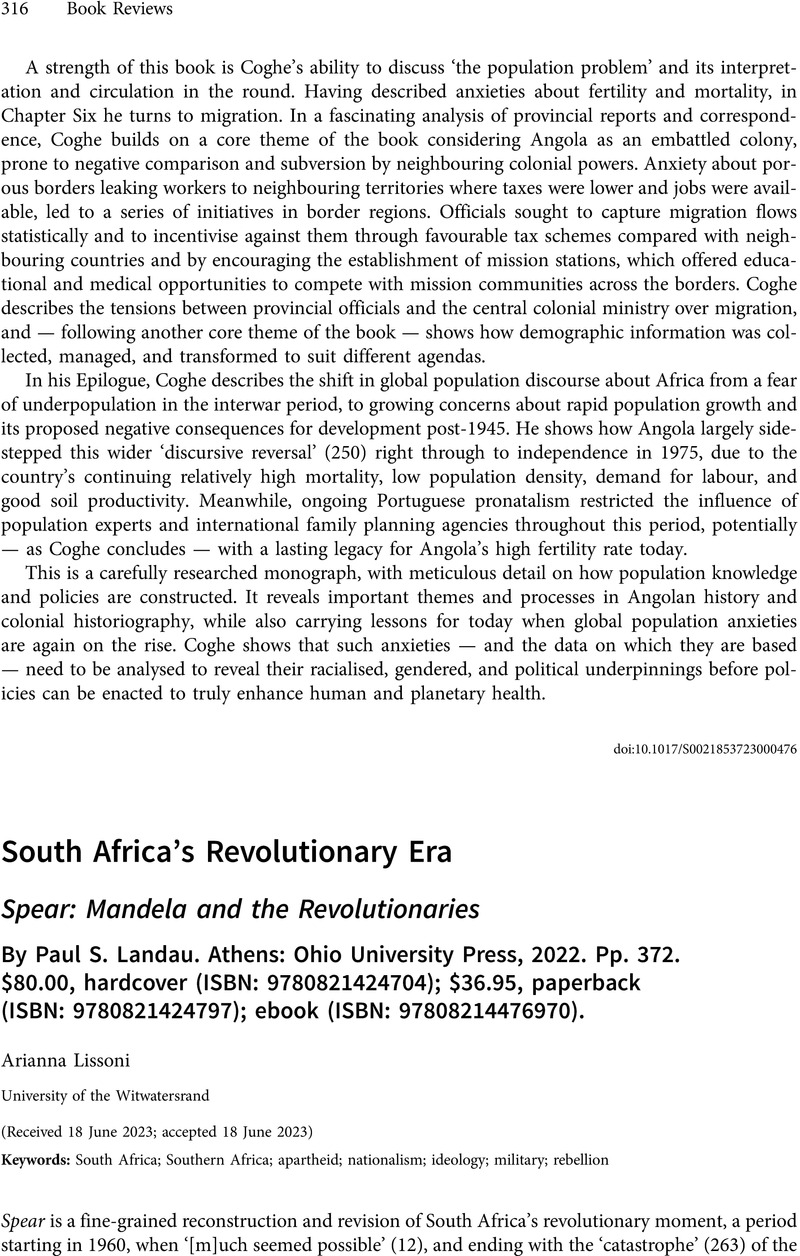Published online by Cambridge University Press: 17 July 2023

1 Lodge, T., Red Road to Freedom: A History of the South African Communist Party, 1921–2021 (Auckland Park, 2021), 323Google Scholar.
2 Macmillan, H., ‘Book review of Stephen Ellis, External Mission: the ANC in exile, 1960–1990’, Africa, 85:1 (2015), 155–6Google Scholar.
3 Suttner, R., ‘The African National Congress (ANC) underground: from the M-plan to Rivonia', South African Historical Journal, 49:1 (2003), 144CrossRefGoogle Scholar.
4 Drew, A., ‘Visions of liberation: the Algerian war of independence and its South African reverberations', Review of African Political Economy, 42:143 (2015), 22–43CrossRefGoogle Scholar.
5 Davis, S. R., The ANC's War against Apartheid: Umokhonto we Sizwe and the Liberation of South Africa (Bloomington, IN, 2018), 26–57CrossRefGoogle Scholar.
6 See Bunting, B., Moses Kotane: South African Revolutionary (3rd edn, Belville, 1998), 262Google Scholar.